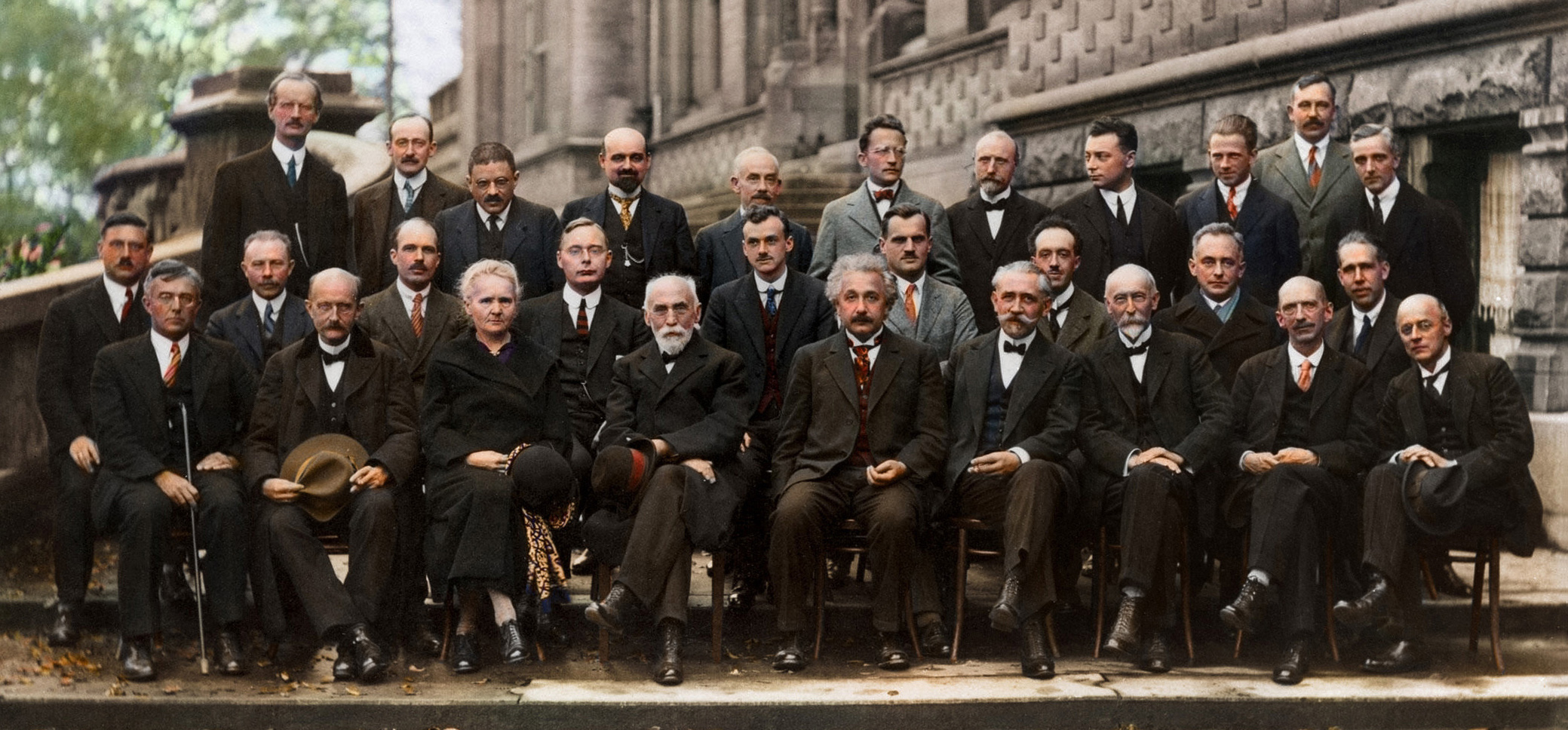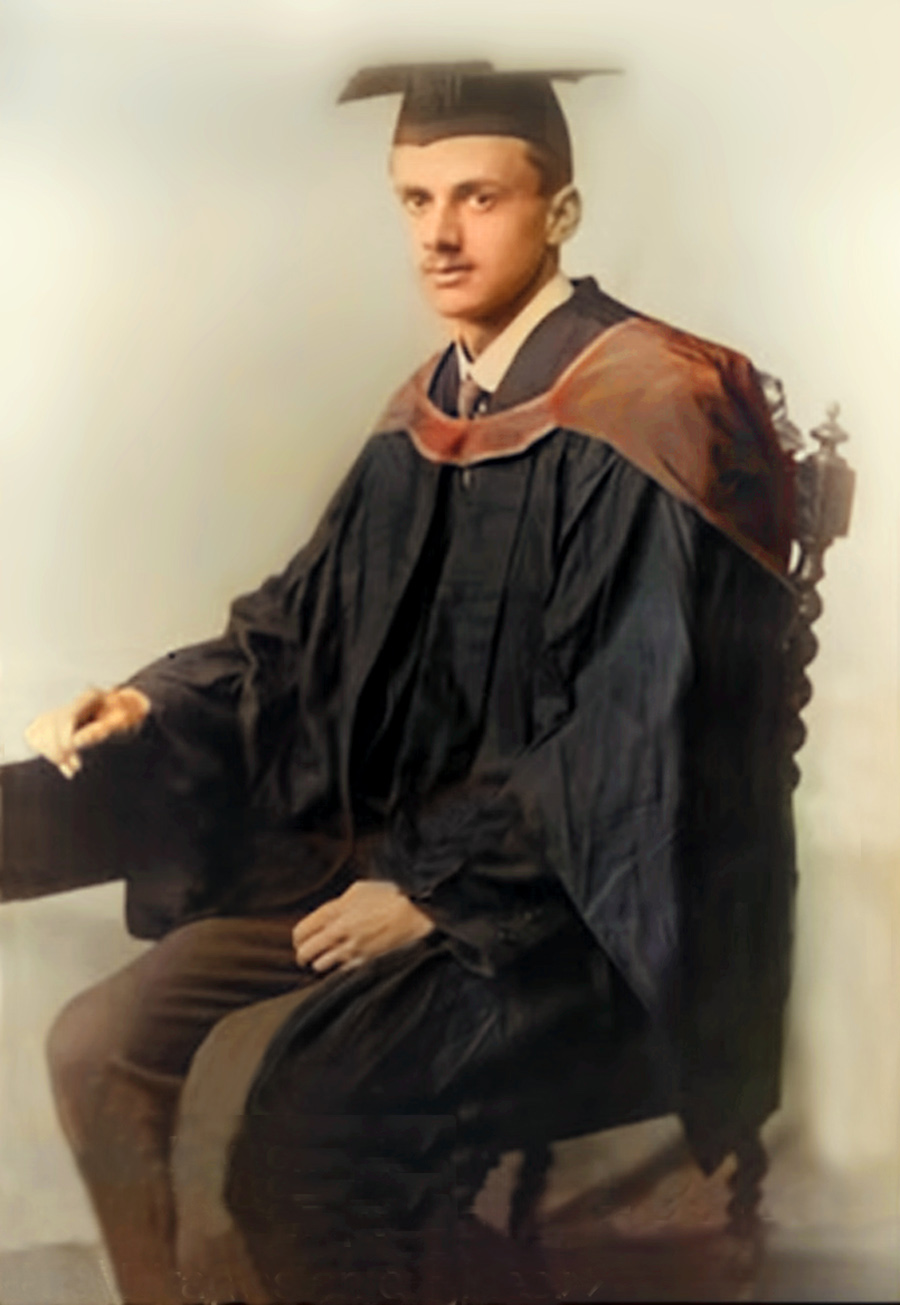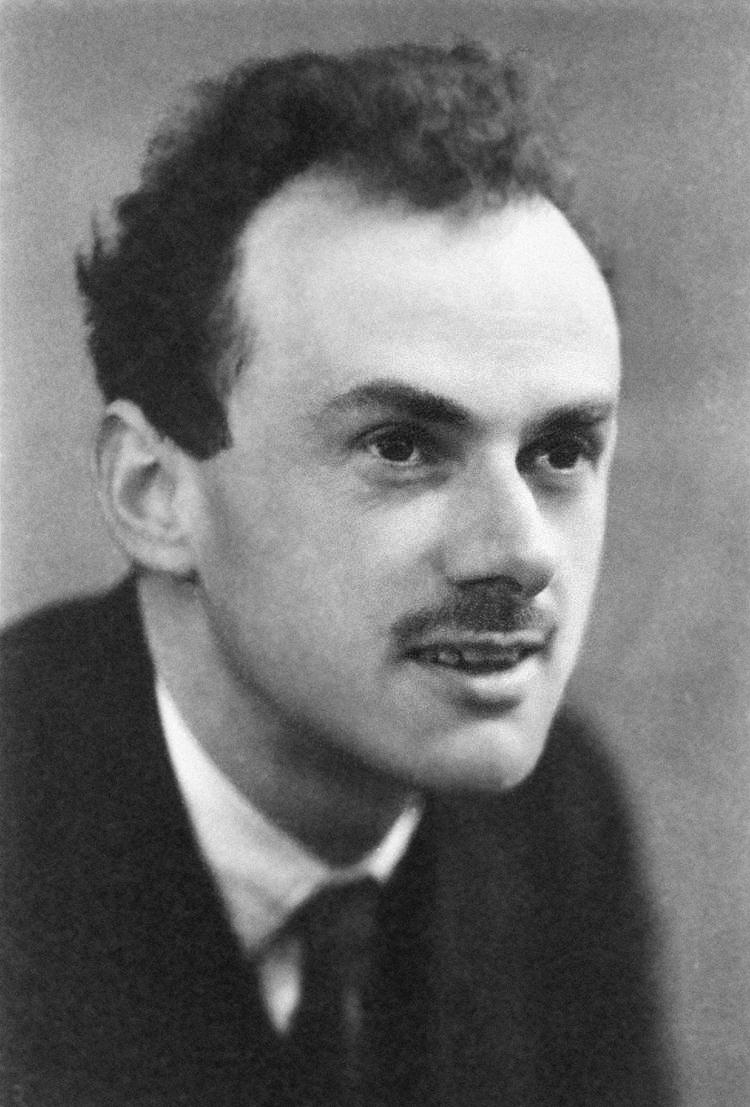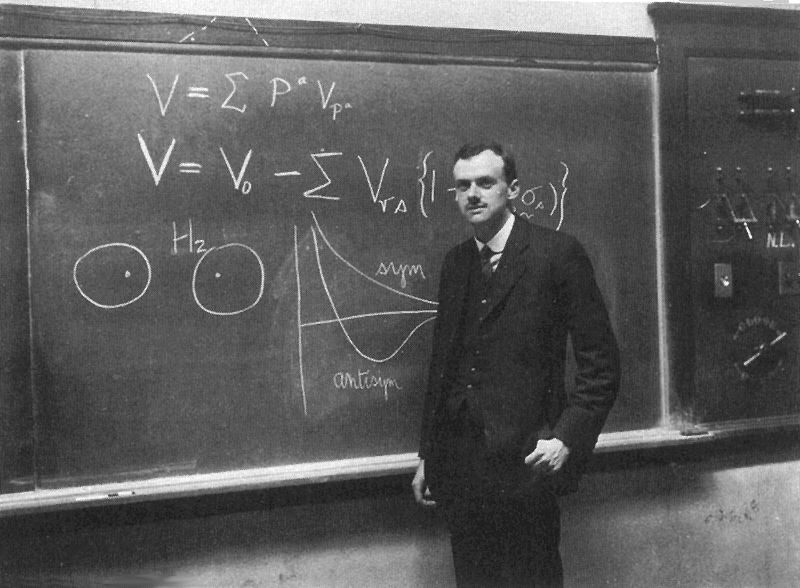|

1927 Solvay Conference
in Brussels
.
First row (L to R):
M. Angmeir, Max Planck (with brown hat in hand), Marie Curie, H. Lorentz, Albert Einstien
(center), P. Langevin, E. Guye, R. Wilson, W. Richardson
Second
row (L to R):
P. Debye, M. Knudsen, L. Bragg, A. Kramers, Paul Dirac (above and to Einstein's right),
A.H. Compton, V. De Broglie, Max Born, Niels Bohr
.Third
row (L to R):
A. Piccard, E. Henriot, P. Ehrenfest, E. Herzen, T. De Donder, Erwin Schroedinger, E. Verschaffelt, Wolfgang
Pauli, Werner Heisenberg,
H.
Fowler,
L. Brillouin
.
WikiMedia Commons colorized image from:
https://commons.wikimedia.org/wiki/File:Solvaycolored-2.jpeg
(click mouse twice over photo for enlargement)
1927 Solvay conference movie (YouTube):
https://www.youtube.com/watch?v=8GZdZUouzBY&t=12s |
|
Early Years
Paul Dirac was born at his parents' home in
Bristol, England, on 8 August 1902. His father, Charles A. Dirac, a French
teacher, was an immigrant from Saint-Maurice, Switzerland. His mother,
Florence Hannah Dirac, née Holten, the daughter of a ship's captain from
Cornwall, England. Paul had a younger sister Betty, and an older brother,
Charles "Felix" who committed suicide in March, 1925. The family were
officially Swiss nationals until they became naturalised in 1919. Dirac's
father was strict and authoritarian and Paul had a strained relationship
with him. Charles forced his children to speak to him only in
French, in order that they learn the language. When Dirac found that he
could not express what he wanted to say in French, he chose to remain
silent.
Education
Paul Dirac was educated first at Bishop Road
Primary School and then at the all-boys Merchant Venturers' Technical
College. Dirac studied electrical engineering at the University of
Bristol. He later attended Cambridge Univerity's St John's College where
he pursued his interests in the theory of general relativity and quantum
physics, under the supervision of Ralph Fowler. He completed his PhD in
June 1926 with the first thesis on quantum mechanics to be submitted
anywhere. He then continued his research in Copenhagen and Göttingen.
Career
Dirac's first step
into quantum theory was taken late in September 1925 as a graduate
student where he developed a quantum theory that was based on
non-commuting dynamical variables. This led him to a more profound and
significant general formulation of quantum mechanics. For this work,
published in 1926, he received a Ph.D. from Cambridge University. In 1928,
building on 2×2 spin matrices he proposed the Dirac equation as a
relativistic equation of motion for the wave function of the electron.
This work led Dirac to predict the existence of the positron, the
electron's antiparticle. Later the positron was observed by Carl Anderson
in 1932. Dirac's equation also contributed to explaining the origin of
quantum spin as a relativistic phenomenon. Dirac is regarded as the
founder of quantum electrodynamics, being the first to use that term. He
also introduced the idea of vacuum polarisation in the early 1930s. This
work was key to the development of quantum mechanics by the next
generation of theorists, and in particular Schwinger, Feynman, Sin-Itiro
Tomonaga and Dyson in their formulation of quantum electrodynamics. In
1933, following his 1931 paper on magnetic monopoles, Dirac showed that
the existence of a single magnetic monopole in the universe would suffice
to explain the observed quantization of electrical charge. Most of his
career was as the Lucasian Professor of Mathematics at Cambridge from 1932
to 1969. After retiring from Cambridge University he moved
to Florida where he spent the last fourteen years of his life at the
University of Miami in Coral Gables and Florida State University in
Tallahassee.
Dirac's book
Principles of Quantum Mechanics, published in 1930, is a
landmark in the history of science. During World War II, he
conducted important theoretical and experimental research on uranium
enrichment by gas centrifuge. Dirac had traveled extensively and
studied at various foreign universities, including Copenhagen, Göttingen,
Leyden, University of Wisconsin, University of Michigan, and Princeton
University.
Accomplishments
-- Quantum Mechanics, Quantum Electrodynamics,
Quantum Field Theory, Dirac Equation, Antimatter,
Magnetic Monopoles --
.
Paul Dirac shared the
1933 Nobel Prize in Physics for his work in quantum mechanics. He
established the most general theory of quantum mechanics and discovered
the relativistic equation for the electron, which now bears his name. The
remarkable notion of an antiparticle to each fermion particle – e.g. the
positron as antiparticle to the electron – stems from his equation. He was
the first to develop quantum field theory, which underlies all theoretical
work on sub-atomic or "elementary" particles today, work that is
fundamental to our understanding of the forces of nature. He proposed and
investigated the concept of a magnetic monopole, an object not yet known
empirically, as a means of bringing even greater symmetry to James Clerk
Maxwell's equations of electromagnetism. He quantized the
gravitational field, and developed a general theory of quantum field
theories with dynamical constraints, which forms the basis of the gauge
theories and superstring theories of today. The influence and importance
of his work has increased with the decades, and physicists daily use the
concepts and equations that he developed.
Family
In 1934 he visited the Institute for
Advanced Study at Princeton and became friendly with Eugene Wigner. There he was introduced to Wigner's sister Margit who lived in
Budapest and was visiting her brother. This chance meeting led, in January
1937, to Dirac marrying Margit in London. Margit had been married before
and had two children, Judith and
Gabriel from her first marriage. Both children adopted the
name Dirac and step-son Gabriel Andrew Dirac went on the became a
mathematician who mainly worked in graph theory. Paul and Margit
Dirac also had two children together, both daughters, Mary Elizabeth and
Florence Monica.
|



